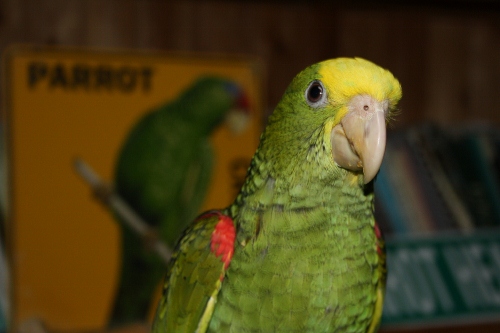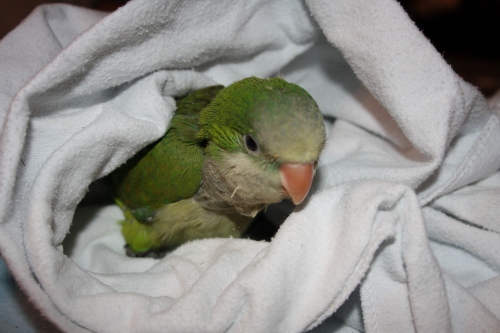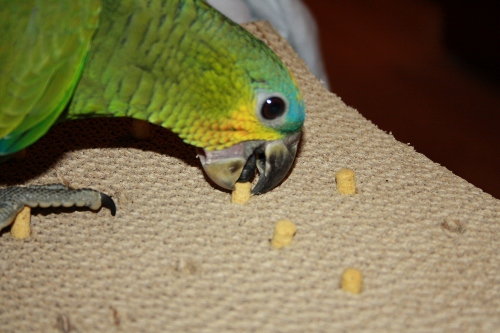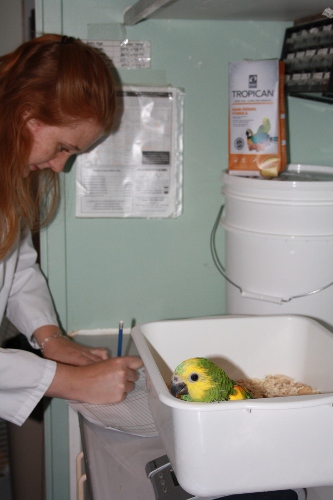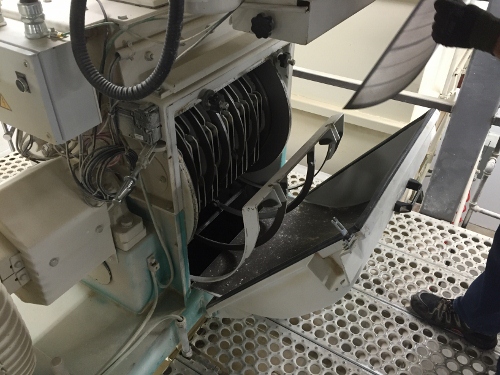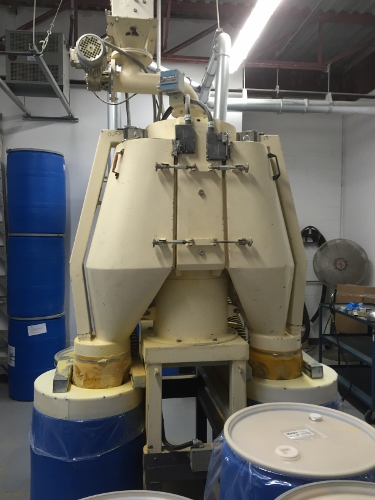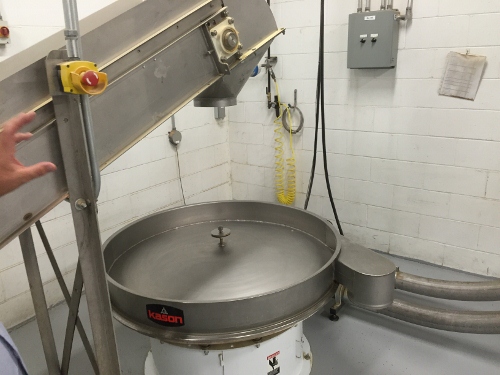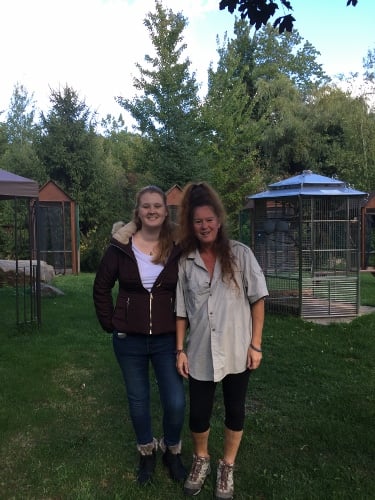Your cart is currently empty!
HARI Official Brand Site

|
NewsHagen UK Bird Product Specialist Visits HARI
7 min read
Hi, my name is Iona Mucherek-Parramore and I’ve been working at Hagen UK for 18 months as their bird product specialist. I have always been fascinated by birds which led me to do a BSc in Animal Biology, followed by an MSc at Nottingham Trent University – both with my focus on birds. I personally keep finches and have also volunteered at zoos for experience and research. I was fortunate enough to be asked to travel to HARI for a few days to learn about the institute and the work it does, as well as to learn more about HARI bird foods and the way they are produced. Even with this in mind, I had no idea what to expect. Needless to say, I was blown away by the facility, the birds and the passion and knowledge of the staff at HARI.
Wednesday 21st September – Day One
Feeling very jet-lagged and tired but full of excitement, I had a full tour of the Hagen Industries facility (in which HARI foods are produced) from Mark Hagen, Director of Research at Rolf C. Hagen Inc. and HARI. Mark has studied and worked with birds throughout his career, so I knew I was in safe hands! I admit to being a bit of a geek and loved seeing the different stages of production right from the human grade peanuts through to the hammer mill and the extruder. It was especially interesting to see the High Performance pellets be micro-ground for the Hand Feeding formula, creating a fine powder which, when mixed for hand rearing, creates a smooth formula with no lumps. What also makes this machine particularly important is that it keeps cool while grinding so it does not affect the high quality nutrition in the formula. After each diet was made, I had the chance to see the laboratories where they are chemically tested – even after testing, every batch is fed to the HARI flock to ensure optimum nutritional value and digestibility.

Thursday 22nd September – Day 2
Josee Bermingham was my HARI ‘tour guide’. Josee, an aviculturist, is the facilities director and a gifted animal technician who speaks regularly at shows and conferences. We hit the ground running, not only with hands on training but also information on everything from stress bars to hand feeding temperatures, early parrot education, supplements, lighting, parasites, hormones, enrichment, weaning, perches, disease – she is a font of knowledge. I had a great tour of the facility situated in woodlands West of Montreal, meeting its many birds which Josee knows on sight – this year’s young, unpaired juveniles, breeding pairs, retired birds, amazons, quakers, macaws and many more. We also covered the daily procedure essential for the birds and second nature to the staff here from checking the birds to cleaning, feeding, showering them and much more. Particularly interesting to me was the hand feeding guidelines HARI created and seeing how quickly the hand rearing formula comes together. My most asked question in the UK about hand rearing formula is ‘how easy is it to mix?’ Simply add the required grams of formula, add the total quantity of water and stir. No lumps, no repetitive strain from mixing and no separation – I can now say all this from experience! HARI also recommends feeding at 98°-102° F due to the high digestibility and safety of the formula. Historically, diets had to be fed hotter to kill pathogens and ensure digestibility; however, the HARI hand rearing formula ensures growth and gut motility with no risk of crop burn. HARI has a website (hari.ca) with great videos on feeding and weaning and much more.
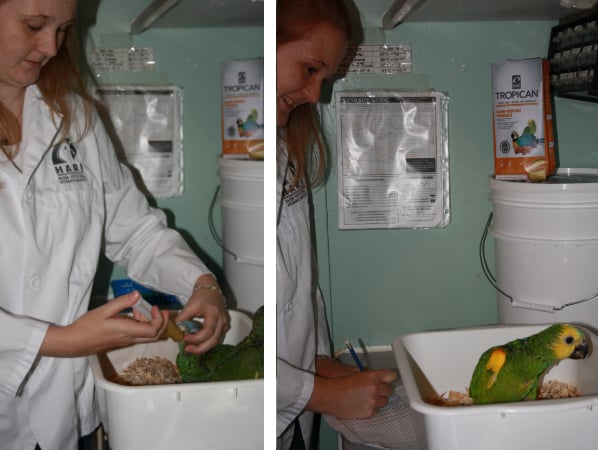
Friday 23rd September – Day 3
We started weaning some of the older nursery birds onto solids using soaked High Performance pellets with Hand Feeding formula which was completely new to me, but is a great way to get the weaning bird on to solid and start reducing the crop size.
We also had a towelling and grooming session. I have seen many parrots towelled for many reasons but a combination of parrot education and human technique made the whole event interesting to the birds instead of stressful. The key benefit for me was that while alone, a single person can restrain a bird with only one finger while grooming their nails and inspecting their wings. The towelling also prevents any pressure on the air sacs of the birds- after each session we did not simply release the bird but re-enforced the good behaviour with play in the towel. Honestly, in the past, nail grooming had sometimes been a stressful experience for me and the birds – I now feel confident that this type of restraint can be positive, educational and bond building rather than just a method to prevent bites!
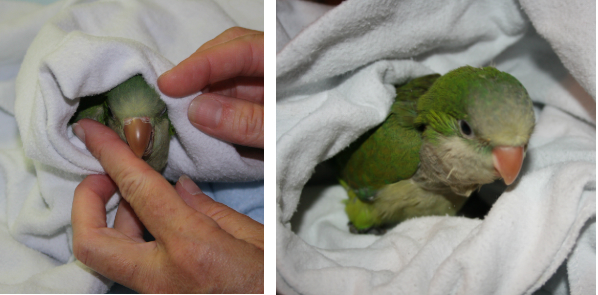
Saturday 24th September – Day 4
My final day was spent perfecting my training and learning more about early parrot education, from enrichment to using older birds as ‘teachers’. An older retired bird often assists with the weaning at HARI – younger birds become curious over what the older ones are eating and before you know it, they are trying it too. We also discussed in depth the nutritional benefits of Tropican, such as the fact that Tropican has 8 sources of protein which means the amino acid profile (the building blocks of cells) is very broad, ensuring growth and beautiful feathers. In addition, Tropican contains only completely natural preservatives and colours. We also discussed my favourite product- Prime, which I didn’t realise, is used regularly in conservation projects! Most recently it has been used by the Belize Bird Rescue; Prime is not just a commonly found vitamin supplement but a vitamin, mineral and amino acid supplement with probiotics and an attractive fruity flavouring.
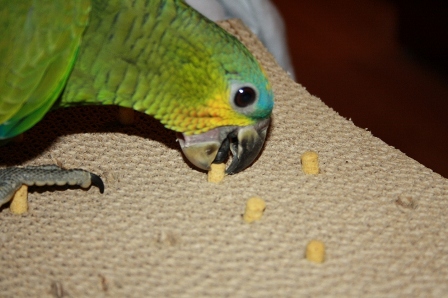
What was truly enjoyable about this trip (not counting the hand feeding, showering the birds and the great discussions) is discovering that HARI is not just about nutrition but also behaviour, training, health, research and much more. All of this training and knowledge goes on to benefit our pet parrots and those in the wild.
Iona Mucherek-Parramore – UK Bird Product Specialist Visits HARI
